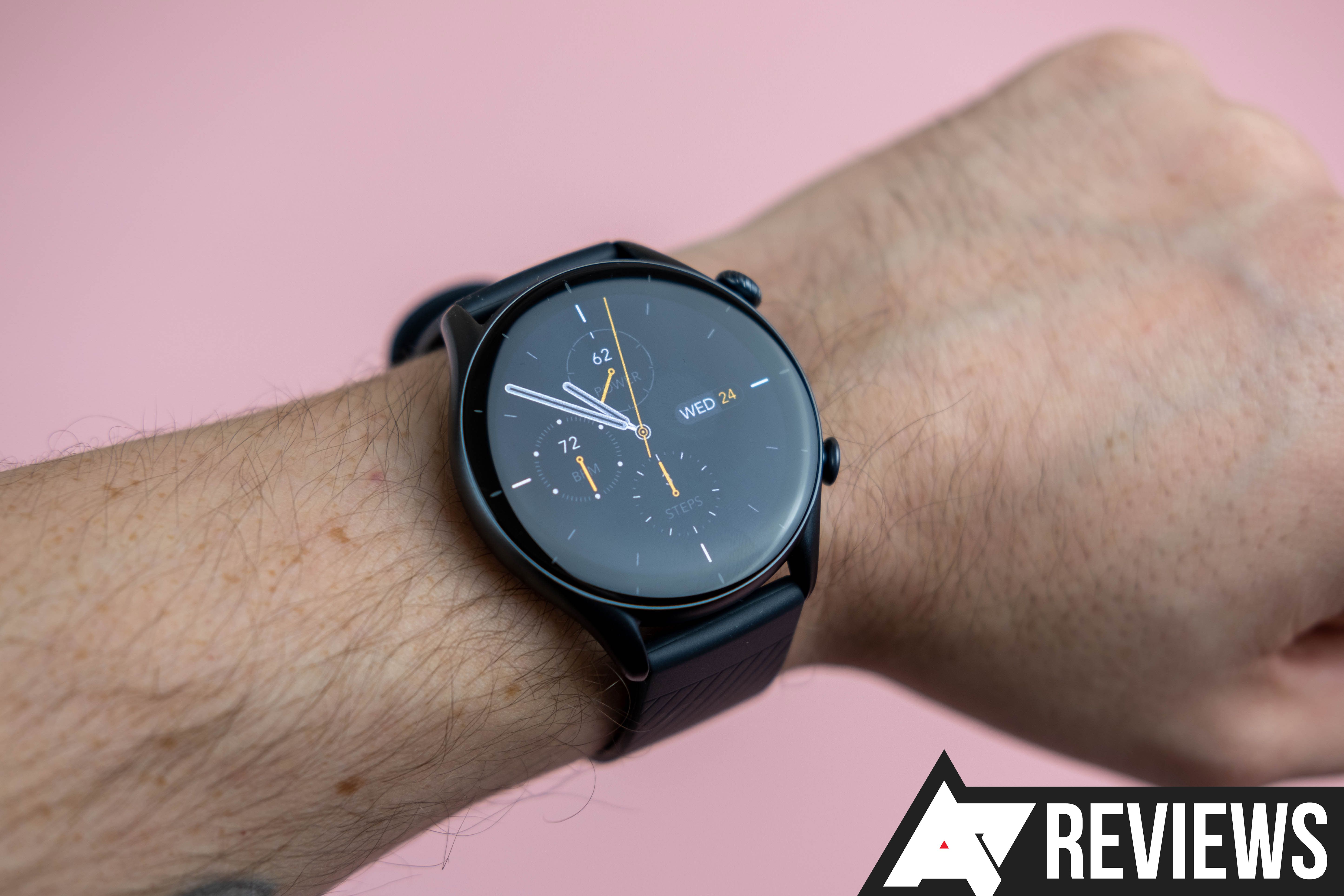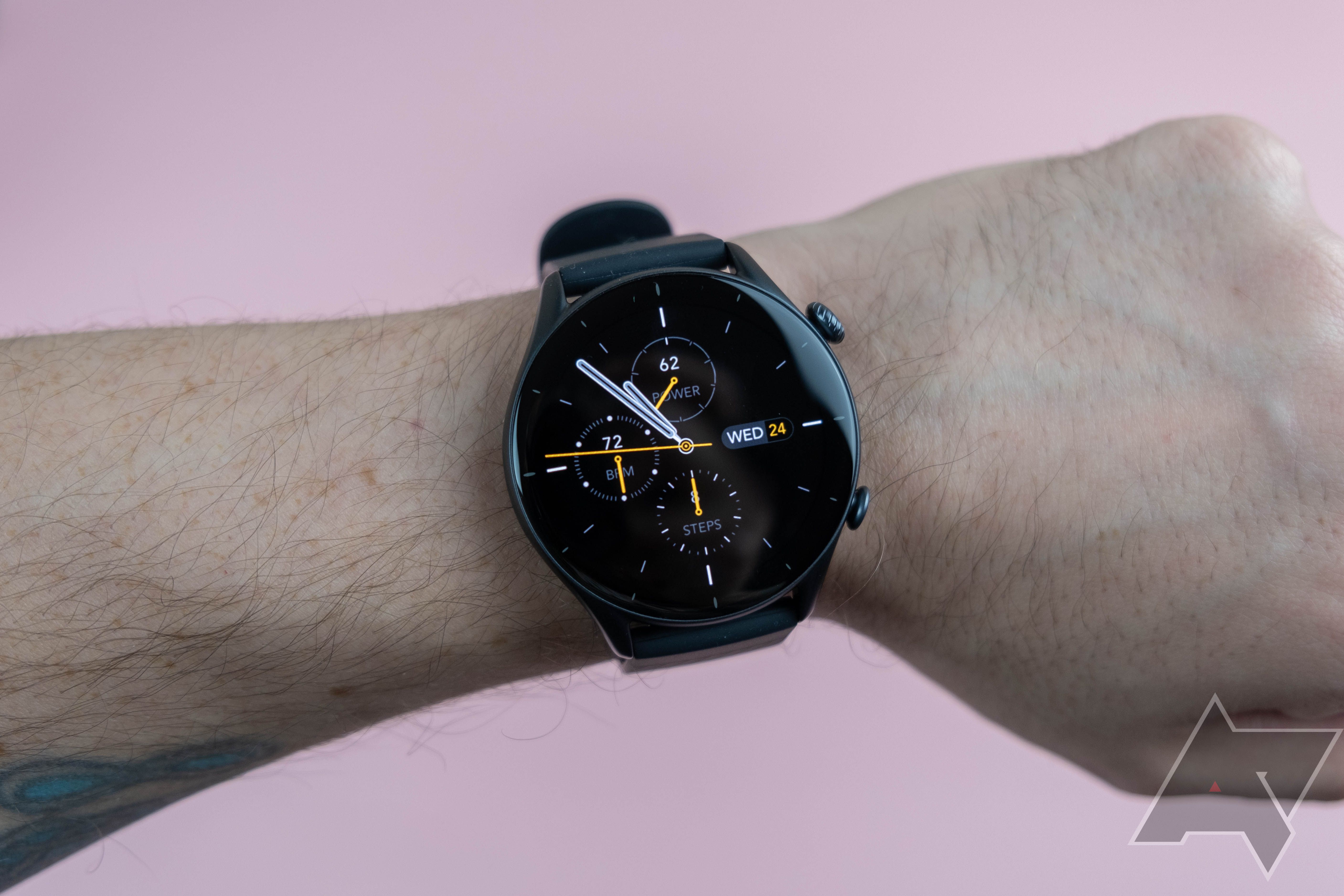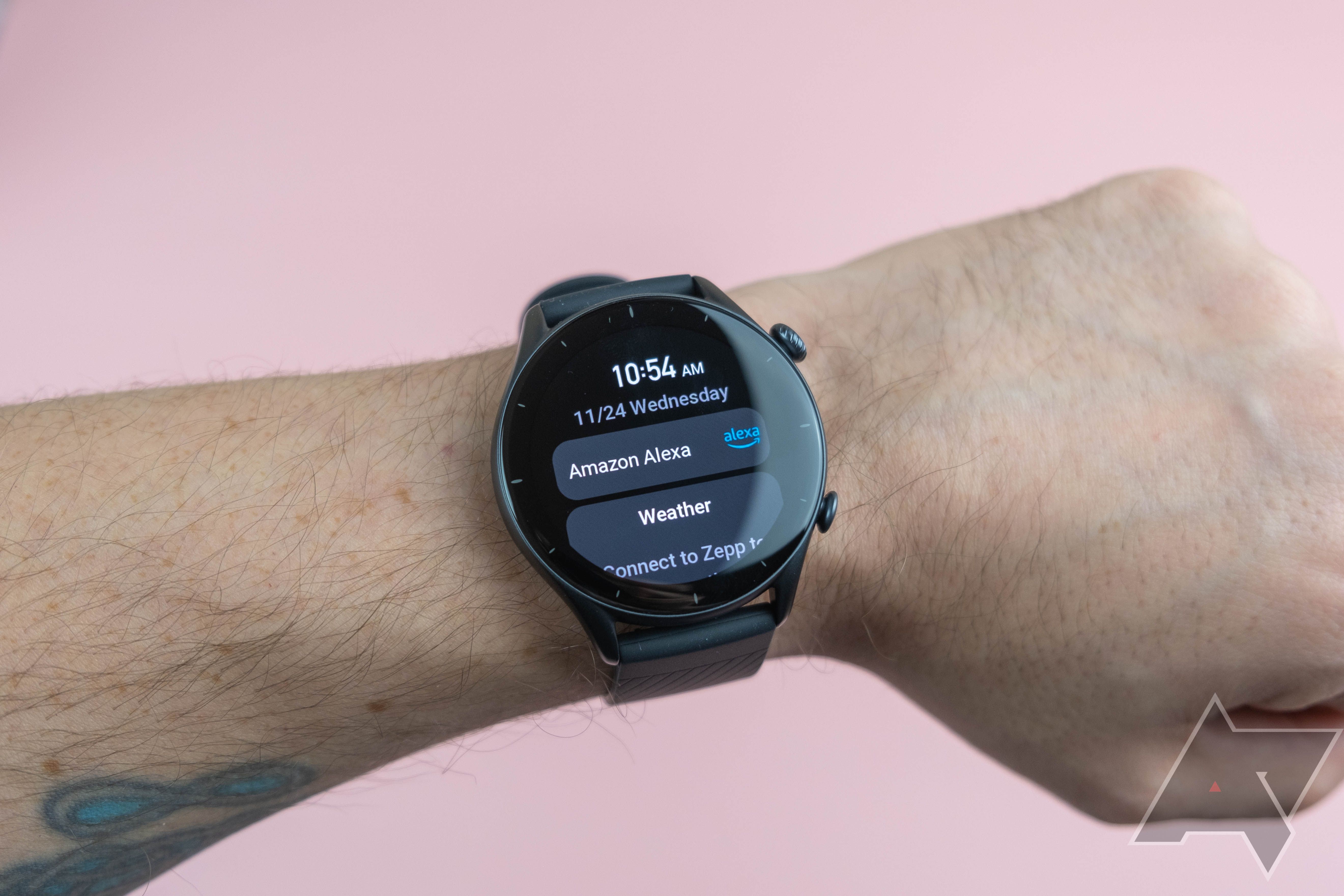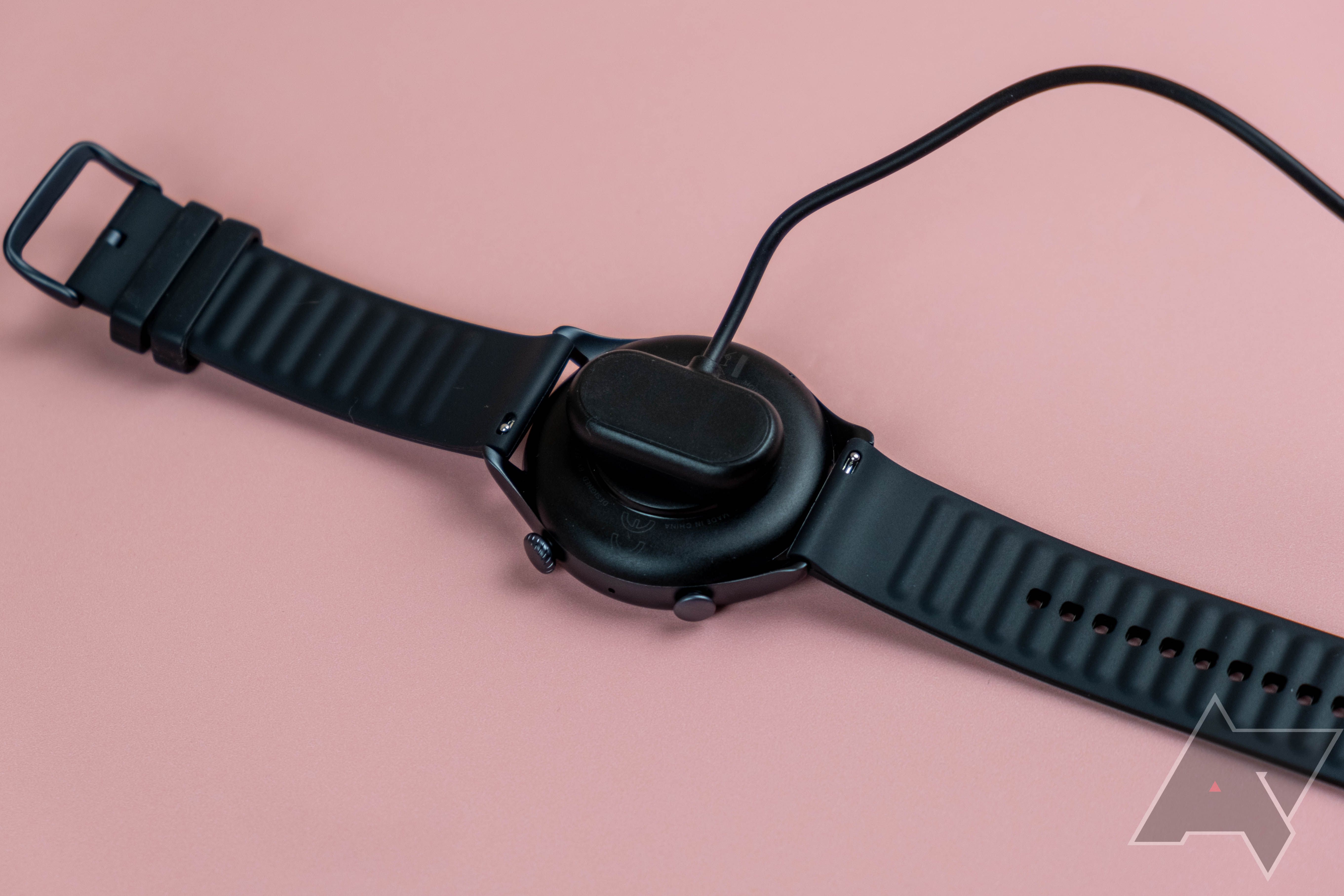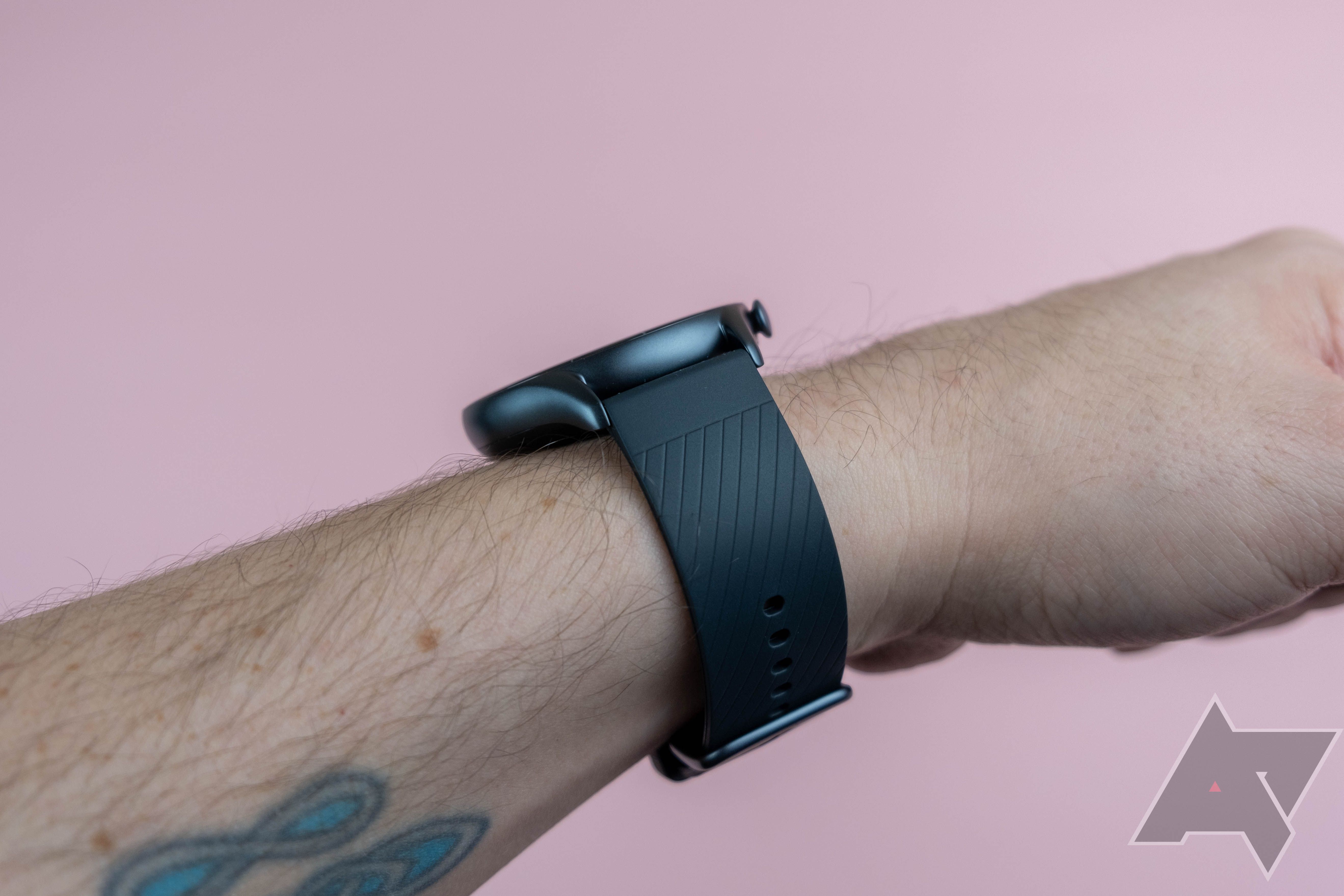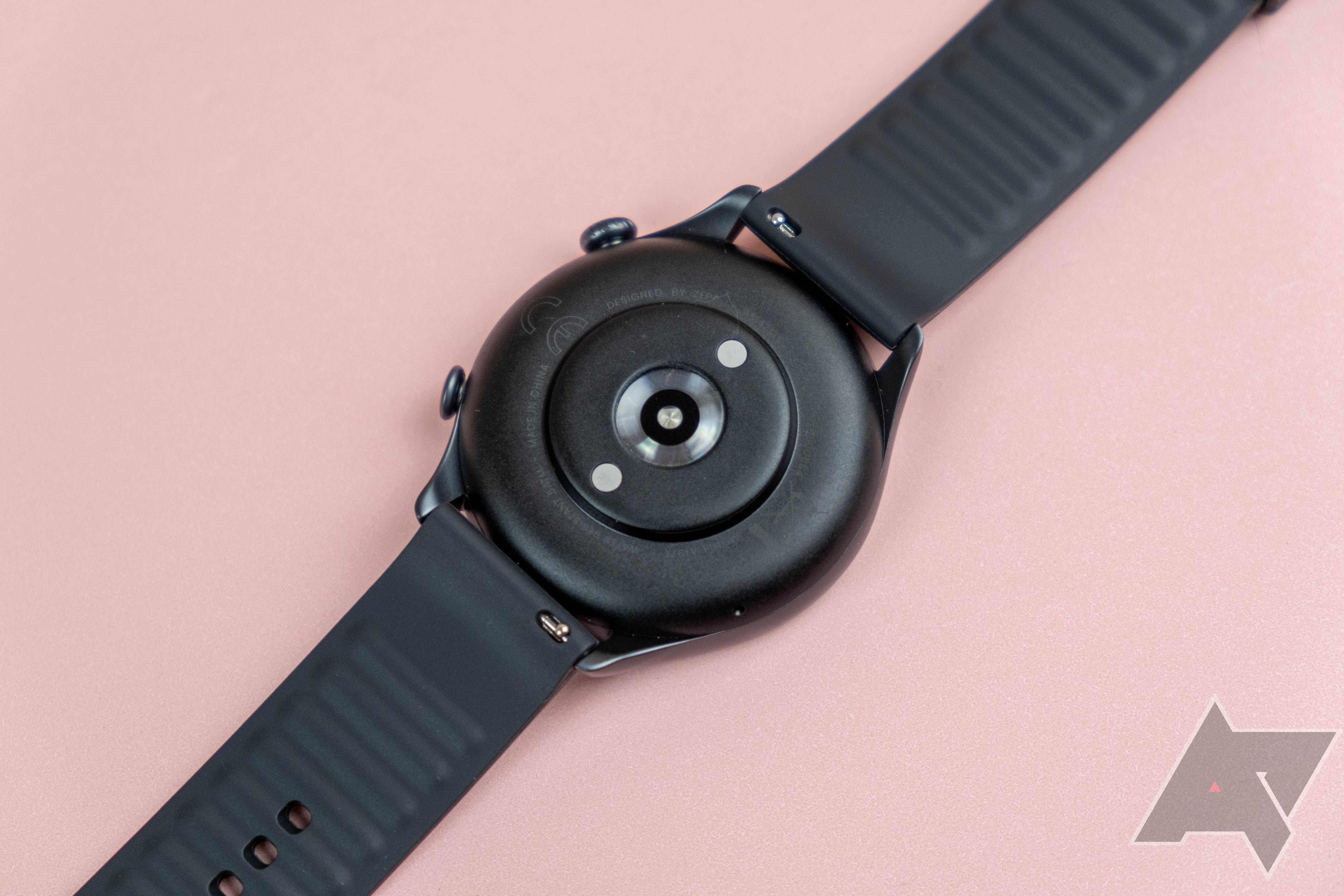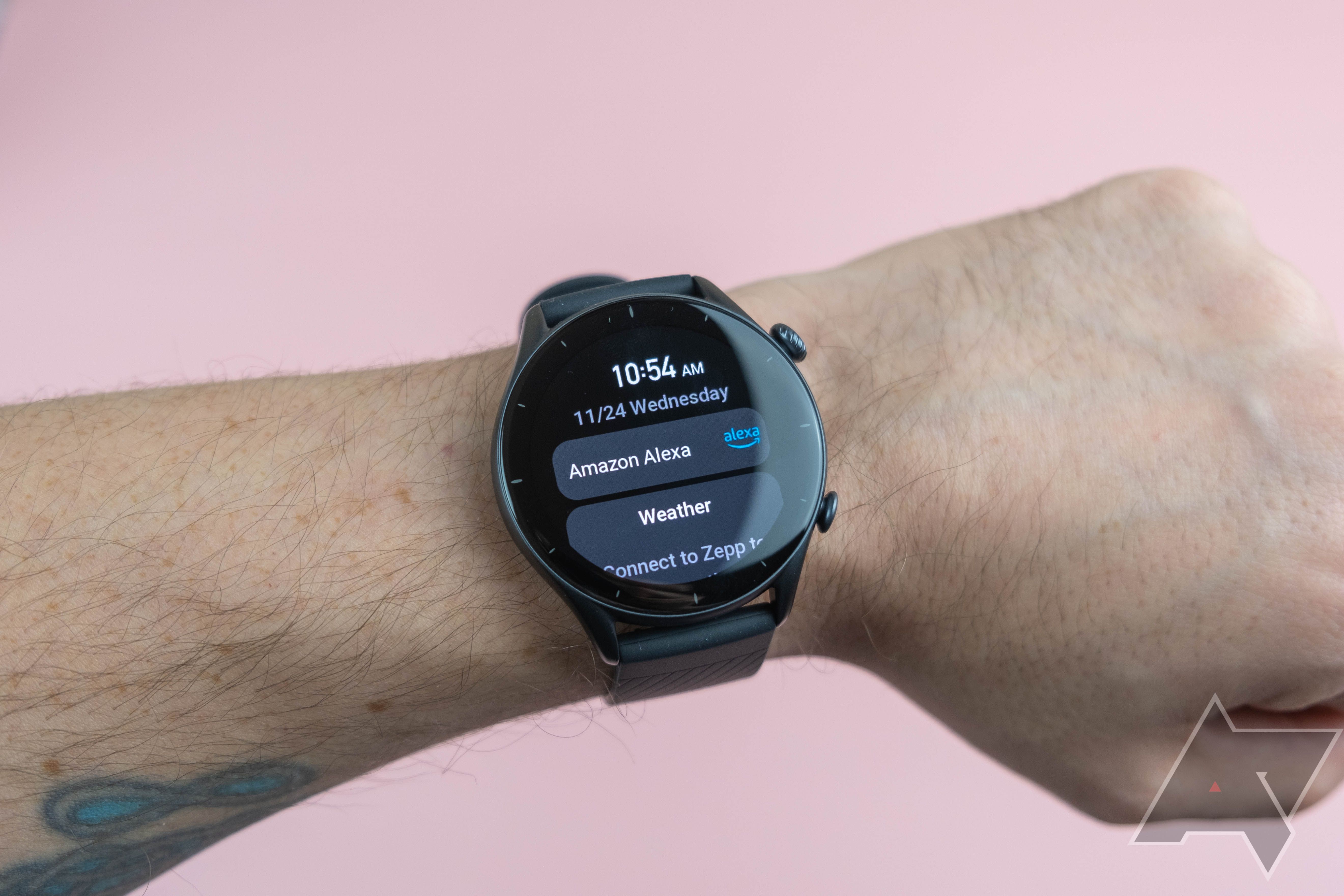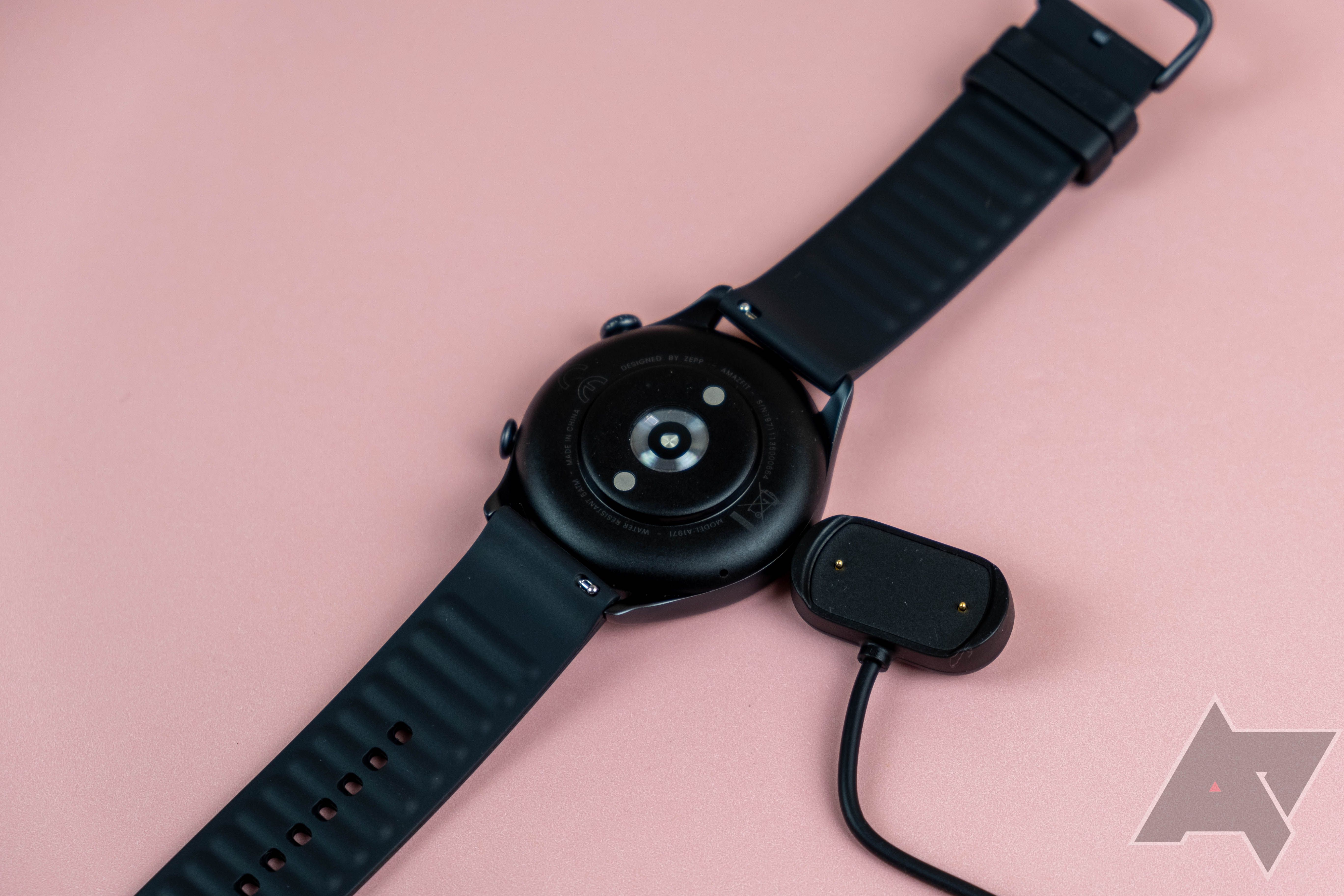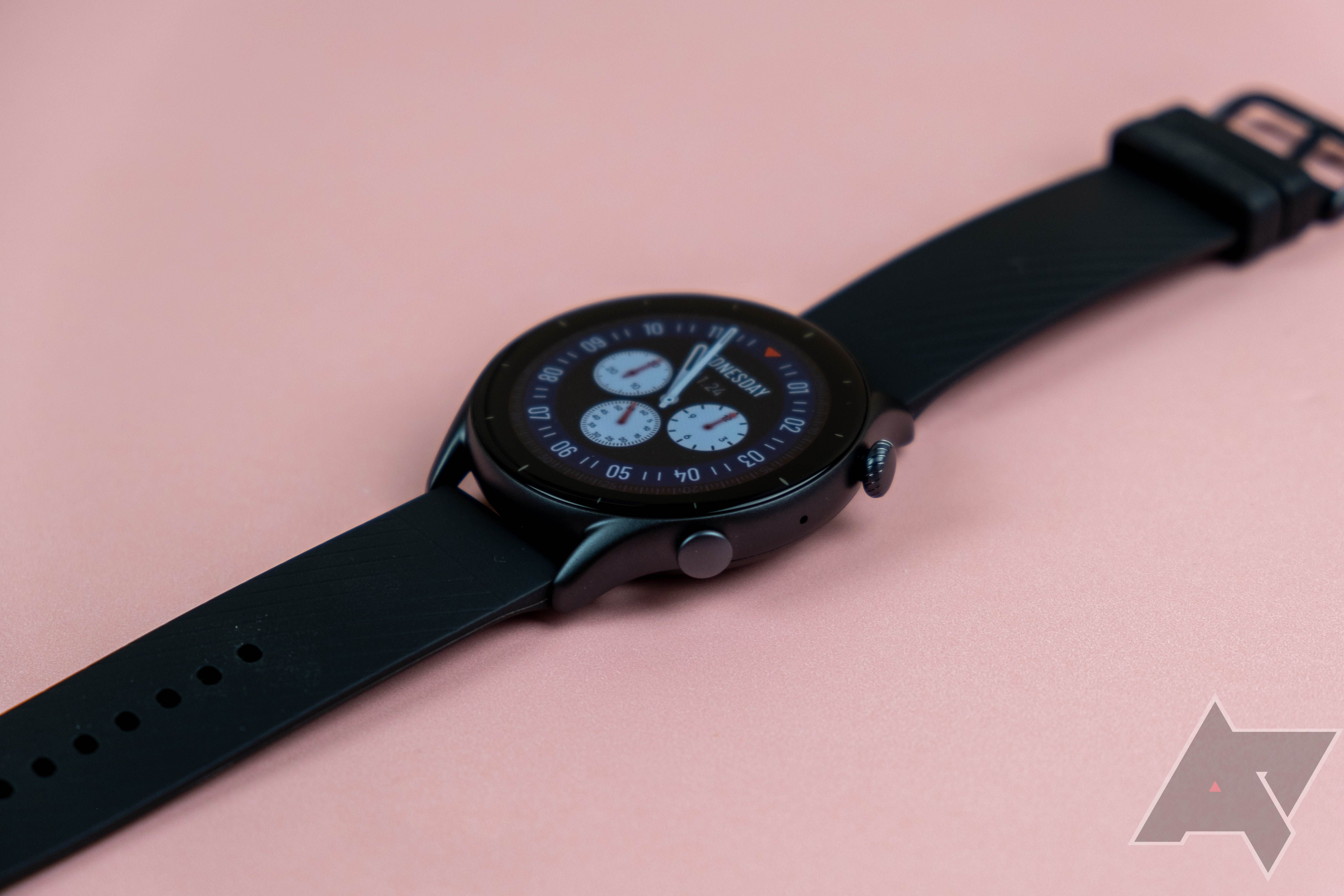The smartwatch industry has largely reached equilibrium. The Apple Watch and Galaxy Watch respectively make up more than half the market share, which means that any competitor is going to have a hard time carving out a niche. Still, the Amazfit GTR3 does its best, particularly for the price, offering almost everything you’d want from a smartwatch for a lower price.
The interface is pretty easy to use, and the body is stylish enough to not ruin an outfit. You get what you pay for with the Amazfit GTR 3, coming in at a modest $180. It has great fitness stats, but smartphone integration could use some work. The latest from Samsung and Fossil might be more expensive, but you get a lot more.
Amazfit GTR 3
This smartwatch brings lots of fitness features and a great battery life, but software issues and questionable design choices hold it back from being a serious competitor.
- Brand: Amazfit
- Battery Life: 450mAh, ~21 days
- Operating System: Zepp OS
- Water Rating : 5 ATM (50 feet)
- Display: 1.39 inches round, 454 x 454 OLED
- Connectivity: Bluetooth 5.1, GPS
- Health sensors: heart rate, SpO2
- Price: $179.99
- Dimensions: 45.8 x 45.8 x 10.8mm, 32 grams
- Sleek, slim body
- Great multi-week-long battery life
- Lots of activity tracking and fitness features
- Large bezels with clock markings
- Cheap, uncomfortable strap
- Some software bugs
Design, hardware, what's in the box
Comfort goes a long way when it comes to any wearable, and the actual body of the Amazfit GTR 3 doesn’t feel entirely unpleasant. It’s not as light as the Fitbit Charge 3, nor as compact as your average Apple Watch, but it’s slim enough to mirror the feeling of an actual watch, which is all you can hope for sometimes.
Unfortunately, the comfort of the Amazfit GTR 3 begins and ends with the body of the device. The same cannot be said about the included rubber strap, which feels cheap and is decidedly uncomfortable on the wrist. Fortunately, the bands are easily changeable with the standard watch spring bar mechanism, so you can attach whichever 22mm-wide band you want.
The backside of the device is, of course, equipped with the sensors for all those fitness features and the small bulge to go with it. As far as smartwatch sensors go, it feels no less intrusive than any of the others. This is also where you’ll charge the device, as the bulge is equipped with two tiny metal contacts, which is where you connect the magnetic charger.
Happily, the OLED display of the Amazfit GTR 3 looks pretty great. The crystal clear icons and the responsive touch screen do make you feel like you’re using a high-end device. Unfortunately, the display is surrounded by some pretty substantial bezels, which gives it an outdated feel, particularly with the clock markings around the edges. Speaking of outdated, the buttons along the side of the Amazfit GTR 3 are nothing if not prehistoric. With these massive buttons, the Amazfit GTR 3 doesn’t look like a 2021 smartwatch, as much as it resembles the old stopwatch that hung around your gym teacher’s neck on the day everyone had to run a mile. They also feel mushy when pressed, and they spin when twisted, which is fine for the one button that’s a scroll wheel, but strange for the other. The build quality is better when it comes to water resistance. The GTR 3 is water-resistant down to 50 meters, which should be more than enough for it to handle a few laps in the pool.
So what comes in the box? Just the smartwatch and the charging cable. As has become common for smartphones of late, the Amazfit GTR 3 does not come with a charging brick in the box. Instead, you’ll find a USB cable with a unique-to-Amazfit GTR 3 charger on the other end. In earnest, the cable feels a bit flimsy, but hey, you are trying to save money, aren’t you?
Software, performance, and battery life
Smartwatches aren’t nearly as robust when it comes to software and performance as, say, your average smartphone, but they can almost replace a smartphone for fitness buffs. The Amazfit GTR 3 -- paired with the accompanying Zepp mobile app -- keeps tabs on all your health data.
The watch’s interface is delightfully simple to use. You can swipe up and down to open the notifications and quick settings menus, respectively, and you can swipe to the left and right to access the core features of the watch, like steps, heart rate, weather, and sleep data. The interface is also quite smooth, with virtually no lag on the touch screen and no problems launching or accessing features.
The Zepp app is equally easy to use. You’ll get three tabs: Homepage, Health, and Profile. The Homepage is essentially a dashboard of all your health data, like heart rate, sleep tracking, weight, steps, and all that. It’s quite conveniently organized, and I’d be lying if I said I didn’t like the layout. The Health tab keeps track of your fitness activities, listing your walks, runs, bikes, steps, and calories burned in a simple, digestible setting. You can even compete with friends. Lastly, the Profile tab is your classic profile and setting page, allowing you to add a picture and manage your devices.
Also, while I’m not much of a “working out” kind of guy, I must admit the fitness features are extensive. It offers 150 different activities, which is obviously way more than I’ll ever need, but if you work out a lot and like to keep it interesting, this watch will definitely be able to keep up. Additionally, it provides a lot of health metrics, from table stakes like sleep monitoring and heart rate to more advanced options like blood oxygen and stress levels.
The fitness features are also quite accurate. After going on a walk with my wife, who proudly owns an Apple Watch, the Amazfit GTR 3 went step-for-step and mile-for-mile, providing virtually identical tracking information on speed and distance. Obviously, the heart rate information was different, but that’s because she’s in much better shape than me.
Outside of fitness features though, the Amazfit GTR 3 software is kind of a mess. The music app requires a whole complicated setup process and doesn’t have any streaming services built-in. The smartwatch also offers Alexa compatibility, but it throws an error message every time I try to use it. Also, I couldn’t for the life of me figure out how to get more than just SMS notifications to come through—yes, even after enabling notification access in the system settings. The smartwatch kept prompting me to allow the device to access notifications, but it was already enabled. Busted notifications are a notable problem, but sadly a common one on wearables. Maybe you think you'll just use some third-party apps? Well, good luck finding any that are worth using among the tiny number in the Zepp store.
Finally, let’s talk about battery life. Allegedly, the Amazfit GTR 3 lasts 21 days on a charge, which sounds outrageous. However, I’ve been burning through about 20% per week, making the 3-week claim much more realistic. Compared to other smartwatches that last, at most, two days without a charge, the Amazfit GTR 3 provides a great solution for anyone that is tired of charging their smartwatch.
Should you buy it?
If you’re on a strict budget or hate charging your smartwatch, maybe. Honestly though, with options like the Galaxy Watch out there for only a slightly larger investment, it seems like a waste to make the Amazfit GTR 3 your go-to pick. The device certainly gets the job done, particularly for fitness enthusiasts, but there are better options available if you care about notifications, app support, and build quality.
Still, if you aren’t after the high-end features or just need to save some money, the Amazfit GTR 3 really does offer some serious battery life with a not-terribly-ugly body and good health features. It’s reasonable for the $180 asking price.
Buy it if…
- You’re on a strict under-$200 budget.
- Health tracking is a big part of your wearable usage.
- You hate charging your smartwatch.
Don’t buy it if…
- You don't want to spend time troubleshooting bugs.
- You want an application ecosystem for your wearables.

